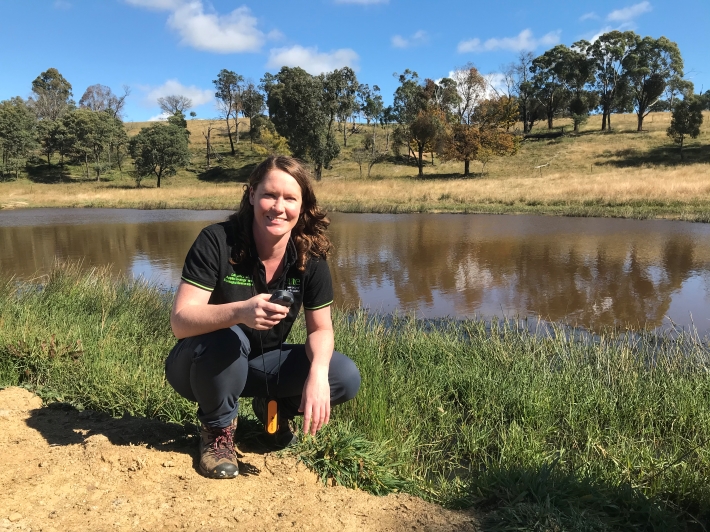



How farm dams can maintain biodiversity on farm
Farm dams scattered across Australia have a vital role to play in conserving native animals, without compromising agricultural production. This is the hypothesis University of New England aquatic biologist Dr Debbie Bower is about to test as part of a $425,469 Australian Research Council grant.
This is the hypothesis University of New England aquatic biologist Dr Debbie Bower is about to test as part of a $425,469 Australian Research Council grant.
While their primary role is for agricultural water storage, there is evidence that over two million farms dams in Australia - which account for at least 9% of our stored water - also serve as a critical refuge for freshwater animals. With agricultural production set to double by 2050 to meet increasing demand, impact on the biodiversity these dams support could also grow.
“The loss and degradation of many natural wetlands in Australia has seen these additional sources of water become important resources in the landscape,” Debbie says. “My project will look at whether farm dam management that benefits production through cleaner water has dual benefits for the frogs, birds, reptiles and bugs that also live there. We will explore whether these two goals are mutually exclusive.”
Some landholders already recognise the ecosystem services that maintaining biodiversity and wildlife provides – mainly through better water quality, windbreaks, pollination, stabilising topsoil, flood control and nutrient cycling – however relatively few have moved to fence off dams and provide troughs for cattle instead.
“These are two of the main mechanisms for managing dams to maintain water quality suited to native animals,” Debbie says. “There is some evidence that when livestock have cleaner water they will drink more, and when they drink more, they will eat more and put on weight faster.
“If farm dams are not managed properly, their water can become silty and turbid, water retention is decreased and aquatic vegetation destroyed. These changes will reduce the usefulness of the dam for both livestock and wildlife.”
The study of farm dams on the Northern Tablelands of NSW will look at the economic and environmental trade-offs of different farm dam management and when using such measures is appropriate.
“Often the management strategies that are the most economical and sustainable in the long-term are also good for wildlife and biodiversity,” Debbie says. “Some landholders are really interested in how the environmental world and the agricultural world can benefit one another, even diversifying to introduce nature viewing and ecotourism on their properties.”
Debbie and her team will test water quality and check for the presence of native species (including macro-invertebrates, fish, reptiles and frogs) in farm dams that are managed under a range of conditions and compare this to naturally occurring wetlands. They will also conduct experiments at the UNE SMART Farms to compare when dams are accessed by cattle and when they are not, to determine whether improved water quality correlates with improved livestock productivity.
With freshwater native species disproportionately more threatened than other species – over 40% of frogs, alone, are threatened with extinction – time is of the essence.
“We are undergoing a sixth mass extinction event on Earth,” Debbie says. “Finding ways to grow food that minimises environmental impacts is going to be really important to maintaining biodiversity.
“We already know that frogs, for instance, play important roles in the ecosystem predating on bugs and insects, providing food for birds and mammals, and as tadpoles graze algae in wetlands. If you lose too many frogs, or too many species of any kind, this food web breaks down and we start to lose the broader benefits biodiversity delivers to a landscape.”
Field work will begin in earnest in September-March, when reptiles, amphibians and insects are most active, however acoustic recorders will be installed in the next few months to provide an indication of frog reproduction and hydrological changes in the dams.
This study builds on Dr Bower’s recent work with Dr Manu Saunders and Dr John Hunter, supported by the NSW Environmental Trust, to explore how species use threatened upland lagoons, and how lagoon management influences the abundance and composition of species. There are just 58 upland lagoons - a threatened ecological community - left on the Northern Tablelands, most of them on private properties.
A recorded talk by Dr Bower on farm dam management will be available on the Northern Tablelands Local Land Services website in June.


